2016 AIGA Medalist: Maira Kalman
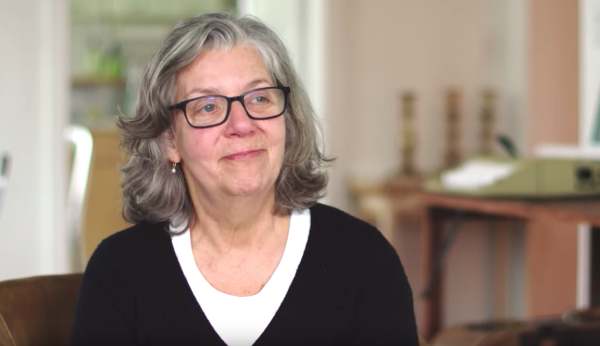
Recognition
2016 AIGA Medal
Born
1949, Tel Aviv, Israel
By Debbie Millman
September 2, 2016
Recognized for brilliantly merging the worlds of storytelling, illustration, and design while pushing the limits of all three with her spirited creative practice.
In 2005, I attended Maira Kalman and composer Nico Muhly’s opera The Elements of Style, based on William Strunk, Jr. and E. B. White’s landmark guide to grammar. The performance coincided with the release of Kalman’s gorgeous illustrated version of the handbook. The sold-out show, presented one night only at the New York Public Library, was so crowded that ushers were stationed along the snaking line holding wayfinding signs. Interspersed among the directional posters were whimsical placards, handmade by Kalman, featuring quirky and fanciful lines from the book.
This pre-show mini-exhibit was enchanting, but my heart stopped when I noticed a young woman holding a sign that simply stated what I considered to be the most mesmerizing line of all. The phrase, handwritten in Kalman’s unmistakable script, read, “Her Story is Strange.” I couldn’t help what I did next. I ran up to the girl and asked if I could have the sign. She replied no, she needed it until the show began. I then asked if I could have it after the opera was over. She looked embarrassed, but promised to check and suggested that I try to find her after the performance.
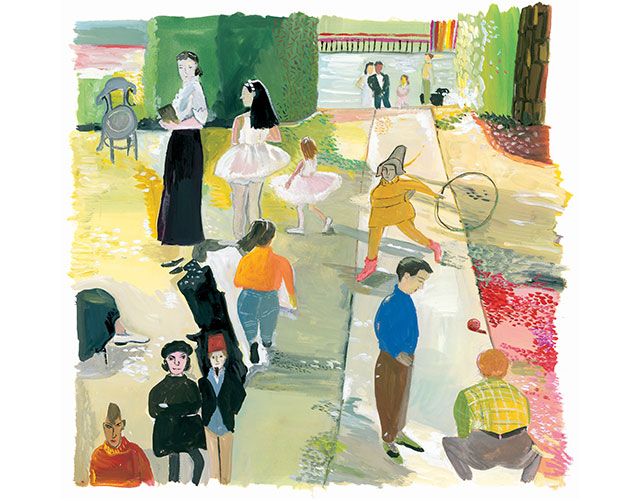
“Paris Sunday” from “The Principles of Uncertainty” (Penguin Press), 2007. Inspired by “a photo by Henri Cartier-Bresson. Capturing the decisive moment.”
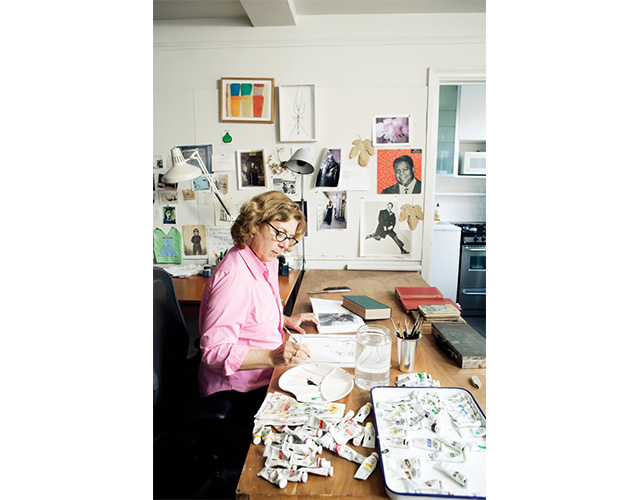
Maira Kalman in her studio, image courtesy of “Dumbo Feather”
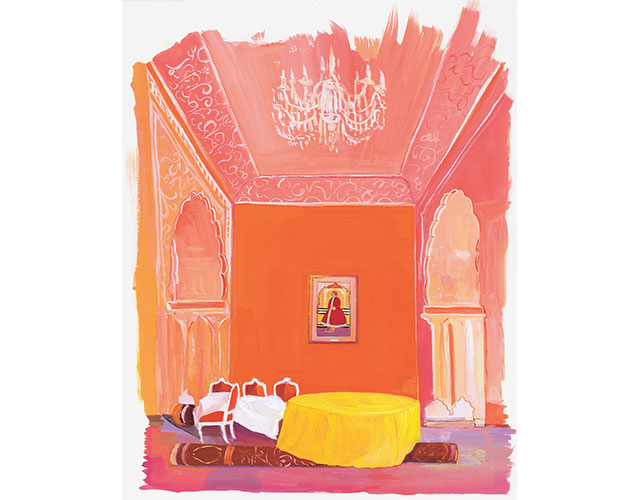
“Indian Room, Jaipur” from “The Principles of Uncertainty” (Penguin Press) 2007. “The wanderings and wonderings in cities. Some of them pink.”
After a truly magnificent and utterly original opera, the audience gathered for a reception. I scanned the room for the young usher, and when I finally found her, inquired again about the object of my desire. Turned out she had forgotten all about it, but she went to find her boss.
When she returned, she needed me to verify one thing: was my story, indeed, strange? Kalman wanted to know. I looked this affable young woman right in the eye and, without missing a beat, proudly stated, “Yes! Absolutely, my story is strange!” And with that, my new friend smiled wide, pulled the prized artwork from behind her back, and replied, “Then yes. If your story is strange, Maira said you could have it.”
While personal in nature, this moment, to me, perfectly reflects Maira Kalman’s innate understanding of the world, her boundless generosity, and her original spirit. Born in Tel Aviv, Israel, she moved to New York City with her family when she was four years old and resided in Riverdale in the Bronx. She attended the High School of Music & Art and Performing Arts in Manhattan and New York University where, at 18 years old, she met fellow student Tibor Kalman (1999 AIGA Medalist).
Partners in business and life for 32 years, they co-founded the legendary design firm M&Co (the M is for Maira) in 1979 and set out to change the world. Tibor quickly established himself as the voice of M&Co, but Kalman was the soul behind the scenes. Together, they had two children and grew the business into a highly influential and enigmatic firm, creating memorable and inventive graphics for clients such as Interview magazine, Restaurant Florent, and the band Talking Heads. M&Co also designed quirky and innovative products for The Museum of Modern Art including paperweights, umbrellas, and clocks, which are still distributed to this day.

Cover of “Beloved Dog” (Penguin Press), 2015. “An essay on the love of dogs, the loss of love, the finding of love.”
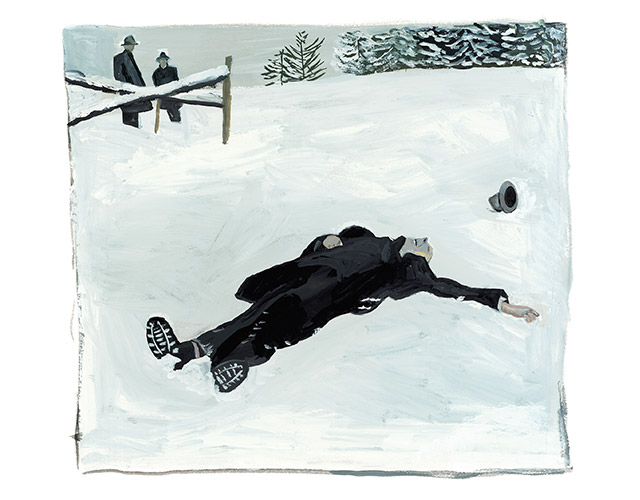
“Robert Walser” from “The Principles of Uncertainty” (Penguin Press), 2007. “From a photo of Walser lying dead in the snow after he had taken a Christmas Day walk.”
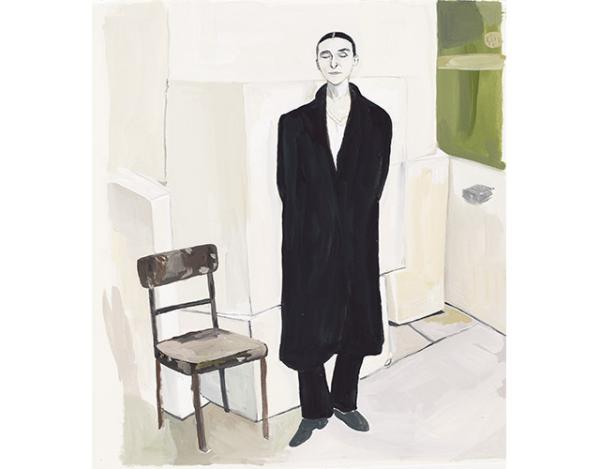
“Pina Bausc,” from “The Elements of Style” (Penguin Press), 2005. “A heroine of mine from the early days.”
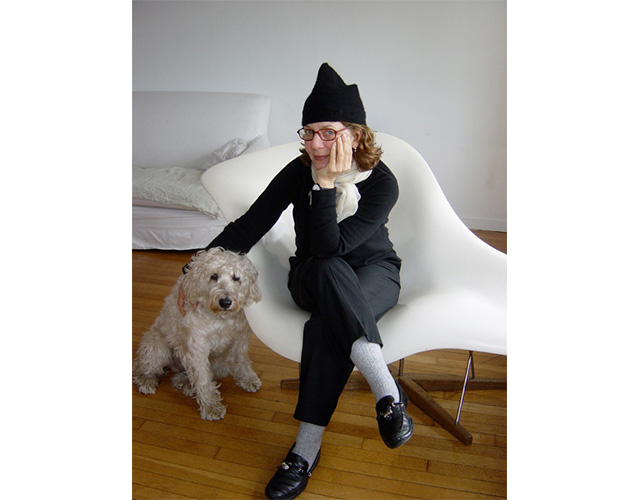
Maira Kalman, courtesy of mairakalman.com
In 1985, Kalman published her first children’s book, Stay Up Late, illustrating the lyrics from a song by musician David Byrne. But it was only after Tibor’s untimely death from cancer in 1999 that she really asserted herself as a powerful creative force. In a 2003 interview in Eye magazine with her good friend the author, educator, and art director, Steven Heller, she said, “Even though feminism burst into being one rainy night in 1969, [Tibor and I] still had a conventional relationship in the sense that I was in the background. I was insecure about dealing forcefully with the outside world…. What made me come to the fore was Tibor’s death…. Maybe I had learned more than I knew from Tibor and maybe I realised that life is short, so why not do whatever you can think of that excites you. There is probably a myth about a woman not being able to really thrive without a man after a lifelong relationship. But people are incredibly resourceful. There are kids and friends and ideas and travelling to China. You know—life.”
Since that time, Kalman has seized the opportunity to share her unique perspective and joie de vivre. She has expanded the genre of visual storytelling with more than 20 books for both children and adults, including Fireboat: The Heroic Adventures of the John J. Harvey; Ah-Ha to Zig-Zag: 31 Objects from Cooper Hewitt, Smithsonian Design Museum; My Favorite Things; and most recently, Beloved Dog. She also wrote and illustrated two monthly online columns for the New York Times: And the Pursuit of Happiness and The Principles of Uncertainty, which have both been collected and published as books.
A consummate collaborator, Kalman worked with authors Michael Pollan on Food Rules: An Eater’s Manual and Daniel Handler on Why We Broke Up, both bestsellers. She has created stage sets for choreographer Mark Morris, fabric for fashion designer Isaac Mizrahi, and clothing and accessories for fashion designer Kate Spade. Kalman is particularly well-known for her 2001 “New Yorkistan” cover of The New Yorker with Rick Meyerowitz, and the two have since co-created pieces for MoMA, op art for the New York Times, and “The New York City Sub-Culinary Map,” a food-centric parody of the NYC subway map that even includes the mythical Second Avenue line.
There is very little Kalman can’t do; her uncanny imagination has birthed a myriad of projects. She’s had several gallery and museum exhibitions of her paintings (she’s represented by Julie Saul Gallery), including retrospectives at the Jewish Museum in New York, the Skirball Cultural Center in Los Angeles, and the Institute of Contemporary Art in Philadelphia. In June 2014, the original paintings of her illustrations for The Elements of Style were exhibited at the Frist Center for the Visual Arts in Nashville. She created a pop-up gallery in collaboration with her son Alex Kalman at Mmuseumm in NYC featuring the underwear closet of her beloved mother, Sara; co-founded the Rubber Band Society, for people who love rubber bands; and has spoken on the main stage at a TED conference in 2007 and again in 2014 when she talked about Toscanini’s pants.
Those who’ve tried have described Maira Kalman’s work as luminous, stimulating, deeply moving, tender, gorgeous, witty, eccentric… the list goes on. Simultaneously down-to-earth and exquisitely transcendent, she reflects the optimism, pathos, and wonderful strangeness of the human existence in all its messy glory. In doing so, she presents a view of the world that is so sublime one can only hope that—for at least a minute or two—they get to live in it.